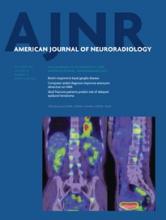Abstract
BACKGROUND AND PURPOSE: Intra-arterial treatment of proximal occlusions in the cerebral circulation have become an important tool in the management of acute ischemic stroke. Our goal was to evaluate the safety and efficacy of intra-arterial acute ischemic stroke treatment performed in our institution in consecutive patients with anterior circulation occlusion during 2000–2011.
MATERIALS AND METHODS: We identified, in our data base, 156 consecutive cases with anterior acute ischemic stroke treated intra-arterially during 2000–2011. Stroke severity was defined according to the National Institutes of Health Stroke Scale, the results of the procedure were defined according to the modified Thrombolysis in Cerebral Infarction score, and clinical outcome was defined according to the modified Rankin scale, with favorable outcome ≤2 at 90 days.
RESULTS: The mean admission NIHSS score was 19.4 (median, 20), with a mean time from stroke onset to groin puncture of 197 minutes (median, 171 minutes). The embolectomy tool of choice was the Amplatz GooseNeck snare (83%). Successful recanalization (modified TICI 2b +3) was seen in 74% of cases. A mRS ≤ 2 at 90 days was seen in 42% with a mortality rate of 17% and symptomatic intracerebral hemorrhage in 4%.
CONCLUSIONS: A high recanalization rate was obtained with the Amplatz GooseNeck snare without any device-related complications. Favorable outcome, mortality, and symptomatic intracerebral hemorrhage are comparable with results of newer embolectomy devices.
ABBREVIATIONS:
- AIS
- acute ischemic stroke
- mTICI
- modified Thrombolysis in Cerebral Infarction
- sICH
- symptomatic intracerebral hemorrhage
- © 2014 by American Journal of Neuroradiology







